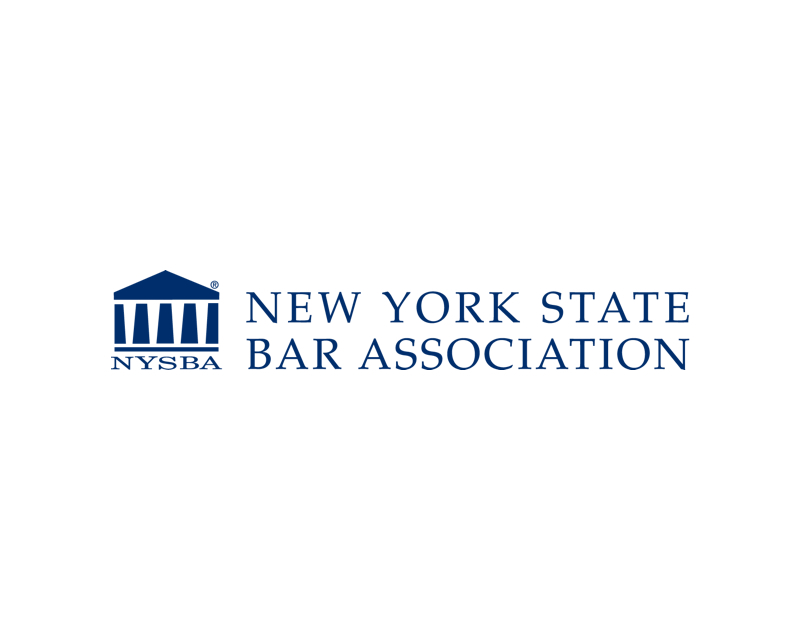The Following People Contributed to This Page
Cindy Cordova is a seasoned legal writer with over seven years of experience crafting clear, informative, and professional content for law firm websites. With a B.A. in English from Trinity Christian College, she combines her strong writing background with a deep understanding of legal topics to help firms connect with their clients through trustworthy and accessible content.
- July 8, 2025
What Is a Cumulative Trauma Injury and How Does It Happen?
Quick Answer: A cumulative trauma injury, also known as a cumulative injury or repetitive strain injury, is a work-related injury that develops gradually over time due to repetitive motions, prolonged awkward postures, or other ergonomic stressors in the workplace. In New York, these injuries are generally covered under workers’ compensation if a clear link can be established between the injury and the employee’s job tasks.
Here’s a breakdown of cumulative trauma injuries and workers’ compensation:
- What It Is: A cumulative trauma injury is not the result of a single, specific incident, but rather the consequence of a series of repeated events or actions that cause progressive damage to muscles, tendons, ligaments, or nerves. These injuries typically develop slowly, with symptoms worsening over time.
- Examples of Cumulative Trauma Injuries:
- Repetitive motion injuries: Such as carpal tunnel syndrome, tendonitis, and other conditions resulting from repeated hand and wrist movements.
- Back and neck injuries: Discomfort or pain arising from prolonged sitting, repetitive lifting, or awkward postures maintained over time.
- Orthopedic injuries: Injuries to bones, joints, and muscles due to chronic physical demands like climbing, carrying, or other physically demanding tasks.
- Other conditions: Including symptoms like numbness, tingling, pain, and decreased range of motion in affected areas, often in the upper extremities.
- Examples of Cumulative Trauma Injuries:
- Treatment Under New York Workers’ Compensation: In New York, cumulative trauma injuries are treated similarly to other work-related injuries within the workers’ compensation system, provided a link to job duties is established. Eligible workers may receive:
- Medical benefits: Coverage for doctor visits, physical therapy, medication, and all other necessary medical treatment.
- Lost wage benefits: Compensation for income lost due to being unable to work while recovering from the injury.
- Vocational rehabilitation: If the injury prevents the employee from returning to their previous job, vocational rehabilitation services may be provided to help them find a new position or receive training for a different role.
- Permanent disability benefits: If the injury results in a permanent impairment (e.g., after reaching Maximum Medical Improvement, MMI), the employee may be entitled to disability benefits based on the severity of that impairment.
- Maximum Medical Improvement (MMI): Once the employee reaches MMI, meaning their medical condition has stabilized and is not expected to improve further, their temporary medical benefits may be re-evaluated, and the process to assess for permanent disability benefits begins.
- Proving a Cumulative Trauma Injury: Establishing a connection between a cumulative trauma injury and the job can be challenging due to its gradual onset, but it is crucial for receiving workers’ compensation benefits. Key considerations include:
- Medical Evidence: Comprehensive medical documentation is essential. This includes reports from your doctor clearly linking the injury to specific job duties and repetitive activities.
- Witness Testimony: Statements from coworkers or supervisors who can attest to the nature of the work, the repetitive tasks, or any potential ergonomic hazards can be helpful.
- Ergonomic Assessments: Evaluations of the work environment by specialists to identify specific ergonomic factors (e.g., workstation setup, tool design) that may have contributed to the injury.
- Important Considerations:
- Seek Legal Counsel: Given the complexity of proving the work-relatedness of cumulative trauma injuries, consulting with an attorney experienced in New York workers’ compensation cases is advisable.
- Document Everything: Maintain detailed records of all medical treatment, doctor’s appointments, and specific work activities that you believe contributed to your condition.
- Be Aware of Deadlines: Familiarize yourself with the deadlines for filing a workers’ compensation claim in New York, as these can vary depending on when the injury was first identified or diagnosed.
Understanding how these injuries develop is the first step in protecting your health and making sure you get the help you need. If you have questions or concerns, The Orlow Firm’s workers comp lawyers are available at (646) 647-3398 for a free and confidential consultation.
What Are Common Causes of Cumulative Trauma Injuries in NYC Workplaces?
Cumulative trauma injuries are caused by repeated physical stress over time. Unlike injuries from a single event, these develop slowly and can become worse if left untreated. In New York City workplaces, many jobs involve repetitive actions, forceful movements, or long hours in one position. These conditions often lead to long-term damage to the body.
Here are some common workplace activities in NYC that cause cumulative trauma injuries:
- Repetitive lifting: Jobs in warehouses, delivery services, or maintenance often require lifting heavy items day after day. This can strain the back, shoulders, and knees.
- Typing and computer work: Office workers and data entry clerks who spend hours at a keyboard may develop conditions like carpal tunnel syndrome due to constant hand and wrist movement.
- Standing or walking for long hours: Many service workers in NYC, such as waitstaff, retail employees, and security guards, spend much of the day on their feet. This can lead to stress injuries in the legs, knees, and feet.
- Using vibrating tools: Construction workers who use jackhammers or similar tools risk nerve damage and circulation problems, known as hand-arm vibration syndrome.
- Improper work setups: Poor desk posture or lack of ergonomic tools in offices can cause neck, shoulder, and back strain over time.
- Frequent reaching or bending: Health care workers, cleaners, and stock clerks often make repeated movements that put stress on the muscles and joints.
In a busy city like New York, time pressure, long shifts, and overcrowded workspaces can make these risks even higher. Workers often push through pain to meet deadlines, not realizing they’re making the problem worse.
If you’re feeling ongoing pain, tingling, numbness, or weakness in your hands, arms, or back, it could be a sign of a cumulative trauma injury. These injuries can become serious if not treated early. If your job involves repeated movements or physical stress, it’s important to take breaks, report symptoms, and seek medical help if needed.
How Do You Know If You’re Suffering from a Cumulative Trauma Injury?
Cumulative trauma injuries usually develop slowly over time. They are not caused by one sudden accident. Instead, they come from doing the same task or motion again and again at work. These injuries can affect muscles, joints, tendons, or nerves.
Because the damage builds up gradually, many people don’t realize they’re hurt until the pain becomes severe. If you’re working in New York City and notice certain physical signs, you might be suffering from a cumulative trauma injury.
Here are common symptoms to watch for:
- Ongoing pain or discomfort: You may feel aching, soreness, or burning in a certain body part, like your hands, wrists, shoulders, or back.
- Numbness or tingling: A “pins and needles” feeling can be a sign of nerve pressure or damage, especially in the hands and fingers.
- Weakness: You may have trouble holding objects or performing tasks you used to do easily.
- Swelling or stiffness: Joints or muscles may feel swollen, tight, or harder to move, especially in the morning or after work.
- Loss of motion: You might notice it’s harder to bend, stretch, or grip as well as you could before.
These symptoms often start mildly and grow worse if you continue the same work activity. For example, if you type at a computer all day, the pain in your hands or wrists may begin as a minor ache but worsen into carpal tunnel syndrome. If you often lift heavy items, shoulder or back pain may turn into a more serious condition over time.
If you’re experiencing these signs, it’s important to take them seriously. Cumulative trauma injuries don’t always go away on their own. In fact, they often get worse without proper care.
New York workers’ compensation laws allow injured workers to file claims even if there was no single accident. If you believe your job duties are causing you long-term pain or discomfort, seeing a medical provider is a key first step. Let them know your symptoms have developed over time and are related to your work.
If you’re in New York City and think you may be suffering from a cumulative trauma injury, it’s a good idea to speak with a workers’ compensation attorney. They can help you understand your rights and guide you through the claim process.
Have questions? Call The Orlow Firm at (646) 647-3398 for a free consultation to learn more about your options.
Which Jobs in New York City Are Most at Risk for Cumulative Trauma Injuries?
Cumulative trauma injuries often develop slowly over time. They are common in jobs that involve repeated motions, heavy lifting, or staying in the same position for long hours. Many workers in New York City face these risks daily. Some of the city’s busiest industries expose their workers to tasks that can lead to these types of injuries.
Here are some jobs in NYC that have a higher risk of cumulative trauma injuries:
- Construction workers: Constant lifting, bending, and use of power tools can lead to back injuries, joint problems, or carpal tunnel syndrome.
- Office workers: Long hours of typing or using a computer without proper ergonomic support can cause neck pain, wrist injuries, or eye strain.
- Health care workers: Nurses and hospital staff often perform tasks like lifting patients or standing for long shifts. This can cause back, knee, and shoulder pain over time.
- Delivery drivers and transportation workers: Repeated lifting, walking, and handling heavy packages or equipment can put strain on the body, especially the back, knees, and joints.
- Retail and warehouse employees: Stocking shelves, scanning items, or standing at a register all day adds stress to the hands, knees, feet, and lower back.
- Manufacturing and factory workers: Repeated use of tools or machinery, especially without breaks, can result in repetitive motion injuries like tendonitis or nerve damage.
- Food service workers: Line cooks, servers, and dishwashers often move quickly, lift items, and perform the same tasks every shift. Over time, this can cause strain in hands, arms, and backs.
In a fast-paced city like New York, many workers don’t realize their pain is work-related. They may think it’s just part of the job. But if your injury repeats or worsens over time due to your job duties, you may be entitled to workers’ compensation benefits.
If you’re experiencing ongoing pain from your daily work tasks, it’s important to speak with a doctor and consider your legal options. For guidance on your rights after a cumulative trauma injury, contact The Orlow Firm at (646) 647-3398 for a free consultation.
How Are Cumulative Trauma Injuries Treated Under New York Workers’ Compensation Law?
Under New York Workers’ Compensation Law, cumulative trauma injuries are treated just like other work-related injuries. If your injury happened over time due to repeated motions on the job, you may still qualify for workers’ compensation benefits—even if there wasn’t a single accident.
To receive benefits, you must report your injury and show that it is caused by your work duties. Cumulative trauma injuries often develop slowly, so it can take time to realize something is wrong. In New York, you should report the injury to your employer as soon as you know—or should have known—that your job caused the condition.
Once your employer has notice, they must notify their insurance carrier. The insurance company may then approve medical treatment and other benefits under workers’ comp.
Treatment under workers’ comp generally includes:
- Medical care: Workers’ compensation covers necessary treatment, including doctor visits, physical therapy, medications, and sometimes surgery. You must see a doctor authorized by the New York Workers’ Compensation Board unless it’s an emergency.
- Wage replacement: If your injury keeps you from working, you may receive partial wage payments. These are usually two-thirds of your average weekly wage, up to a legal limit based on your level of disability.
- Ongoing care: For chronic conditions, long-term care may be required. In some cases, this includes pain management and rehabilitation services.
Common examples of cumulative trauma injuries treated through workers’ comp include:
- Carpal tunnel syndrome from long hours of typing or scanning items
- Back injuries from repeated lifting or poor posture over time
- Shoulder strain in jobs involving overhead work, such as construction or stockroom workers
- Knee problems from constant standing or climbing stairs
You may need to attend medical exams set up by the insurance company, called independent medical exams (IMEs). These exams help decide the extent of your injury and your ability to return to work. While meant to give an unbiased opinion, they can impact your benefits, so it’s important to be prepared.
The treatment process can be slow or complicated, especially if the insurance company questions whether the injury is work-related. If this happens, a hearing before a Workers’ Compensation Law Judge may be required to resolve the issue.
If you’re facing delays, denials, or confusion about your medical care or benefits, it may help to speak with a workers’ compensation attorney. The law provides protections, but it can be hard to navigate the system alone—especially when dealing with a long-term injury.
For guidance with a cumulative trauma injury claim in New York City, you can contact The Orlow Firm at (646) 647-3398 for a confidential consultation.
What Benefits Can You Receive for a Cumulative Trauma Injury in NYC?
If you’ve suffered a cumulative trauma injury at work in New York City, you may be eligible for benefits through workers’ compensation. These benefits are in place to help injured workers get medical care and support while they recover.
Here are the main types of benefits you may receive:
- Medical care: Workers’ compensation covers all reasonable and necessary medical treatment related to your injury. This can include doctor visits, physical therapy, medications, and surgery, if needed. You won’t need to pay for care out of pocket, but you must use an authorized healthcare provider.
- Lost wages: If your injury prevents you from working or cuts your hours, you may get cash benefits. The amount depends on how badly you’re hurt and how much work you’re missing. In New York, most workers get about two-thirds of their average weekly wage, up to a maximum set by state law.
- Permanent disability benefits: If the injury leads to a lasting problem—like reduced hand or back movement—you may receive additional money. This is based on how much the injury limits your ability to work.
- Vocational rehabilitation: If you can’t return to your previous job, you might qualify for training or job placement services. This can help you find new work that fits your physical abilities.
- Death benefits (for families): If a loved one passes away from a work-related cumulative trauma injury, their spouse and dependents may receive weekly cash benefits and help with funeral costs.
Cumulative trauma injuries often happen slowly over time. Because of this, it may be hard to connect the injury to your job. Getting proper documentation and medical evaluation is crucial to prove your case and get the benefits you need.
If you believe your job has caused a repetitive stress injury, like carpal tunnel syndrome or chronic back pain, workers’ comp may apply. To make sure you receive all the benefits you’re entitled to, it helps to speak with someone who understands New York’s workers’ compensation system.
For guidance on your specific situation, contact The Orlow Firm at (646) 647-3398 for a free consultation. We’re here to help injured workers in New York City understand their options and protect their rights.
How Do You File a Workers’ Compensation Claim for a Cumulative Trauma Injury in New York?
Filing a workers’ compensation claim for a cumulative trauma injury in New York can seem confusing, especially if your injury came on slowly over time. Unlike a sudden accident, cumulative trauma injuries—like carpal tunnel syndrome or back strains—develop from repeated stress on the body. These types of injuries are common in jobs involving repetitive movement, lifting, or awkward postures. Here’s how the process works in New York City.
1. Report the Injury to Your Employer
As soon as you notice symptoms of a cumulative trauma injury, tell your employer. This is a required step under New York law. You must notify your employer within 30 days of discovering that your injury is related to your job. Even if the pain started earlier, what matters is when you realized your work activities may be the cause.
2. Get Medical Attention
See a doctor right away and let them know your injury may be work-related. The doctor should document your condition and how it connects to your job duties. This medical report is a key part of your claim.
3. File Form C-3 with the New York Workers’ Compensation Board
To start your claim, you must file a Form C-3. This is the official form used to report your injury to the New York Workers’ Compensation Board. You should file this form as soon as possible, but no later than two years after you knew or should have known that your injury was work-related.
To file Form C-3, you can:
- Submit it online through the Workers’ Compensation Board website
- Mail or fax it using the contact info listed on the form
- Call the Board for help if you’re unsure how to complete the form
The form will ask for details like:
- When you first started feeling pain
- What part of your body is injured
- What tasks at work caused or worsened the problem
4. Follow Up with Medical Records
Ongoing medical treatment is important. Your doctor may need to send updates about your condition so that your claim can be reviewed properly. The more documentation you have, the easier it is to support your case.
5. Your Employer’s Insurance Company Reviews the Claim
Once you file your claim, your employer’s workers’ compensation insurance company will investigate. They may ask for more details, send you to an independent medical exam, or request more records. This process can take time, but you should keep up with doctor visits and follow advice from your healthcare provider.
6. Wait for a Decision
If the insurance company accepts your claim, you may begin receiving benefits. If they deny the claim—or delay payments—you have the right to challenge the decision. This may involve attending a hearing before a workers’ compensation judge.
Need Help with Your Claim?
Filing a claim for a cumulative trauma injury in New York can be tough, especially if your employer or their insurance company challenges it. If you have questions or if your claim has been denied, you don’t have to go through it alone. Call The Orlow Firm at (646) 647-3398 for a free, confidential consultation. We can help you understand your rights and take the next steps.
What Should You Do If Your Workers’ Comp Claim Is Denied?
If your workers’ compensation claim for a cumulative trauma injury is denied in New York, don’t lose hope. A denial doesn’t mean the end of your case. There are steps you can take to appeal the decision and protect your right to benefits.
Here’s what you should do if your workers’ comp claim is denied:
- Read the denial letter carefully: The insurance company must tell you why your claim was denied. Common reasons include missing paperwork, late filing, or lack of medical proof.
- Gather supporting documents: Collect all medical records, doctor’s notes, and any other proof related to your cumulative trauma injury. This can include reports from your treating doctor, records showing you missed work, and any written statements from witnesses.
- File an appeal: In New York, you can request a hearing before a Workers’ Compensation Law Judge by filing a form called the “Request for Assistance by Injured Worker” (Form RFA-1W). Deadlines apply, so act quickly.
- Prepare for the hearing: At the hearing, you’ll have the chance to explain your side. A judge will review your case, listen to evidence, and make a decision. You may need to bring witnesses or expert testimony.
- Consider speaking with a workers’ compensation attorney: Appealing a denied claim can be complex, especially when dealing with long-term injuries like carpal tunnel syndrome or back problems. A lawyer can help build your case, gather the right evidence, and represent you during hearings.
Why claims get denied for cumulative trauma injuries:
- Delayed reporting of the injury to your employer
- Lack of clear medical evidence linking the injury to your job
- Disputes about whether the injury is work-related
- Missed deadlines for filing the claim
Cumulative trauma injuries, like tendonitis or repetitive strain injuries, often develop over time. Because of this, it can be harder to prove that they are directly caused by work. That’s why clear documentation and medical support are so important.
If your initial claim is denied, it’s important to stay calm and take the right steps. Many workers in New York City face challenges like this, especially those in jobs that require constant motion or computer work. A denial doesn’t mean your injury isn’t real — it just means more work may be needed to support your case.
If you’re facing a denied claim, you’re not alone. For help understanding your rights and exploring your options, you can speak with a workers’ compensation attorney. Call (646) 647-3398 to schedule a free consultation with The Orlow Firm and get the guidance you need.
FAQs About Cumulative Trauma Injuries and Workers’ Compensation in NYC
- What is a cumulative trauma injury? A cumulative trauma injury (CTI) happens over time from doing the same motion again and again. It’s also called a repetitive stress injury. It can affect muscles, tendons, nerves, or joints. These injuries often come from work tasks like typing, lifting, or using tools for hours a day.
- Is a cumulative trauma injury covered under workers’ compensation in New York? Yes. If your injury happened because of your job duties, you may qualify for workers’ compensation benefits in New York. This includes medical care and partial wage replacement.
- Do I need to report a cumulative trauma injury right away? Yes, it’s important to report it as soon as you realize that your symptoms may be work-related. Tell your employer and see a doctor. In New York, you must report the injury to your employer within 30 days.
- What are some signs of a cumulative trauma injury? Common signs include numbness, tingling, pain, stiffness, or weakness—especially in your hands, wrists, shoulders, or back. If the pain gets worse over time, it may be a sign of cumulative trauma.
- Can I still get workers’ compensation if the injury took time to develop? Yes. New York law allows workers to file claims for injuries that happen slowly over time. Just make sure to report it and file your claim within the legal deadlines.
- What if my job never had a single accident? Can I still qualify? Yes. You don’t need a single accident or incident. If your injury came from doing the same task over and over, and that task was part of your job duties, you may qualify.
- Which jobs in NYC are more likely to cause cumulative trauma injuries? Jobs that involve repetitive motion, heavy lifting, or long hours doing the same task can lead to CTIs. This includes office workers, restaurant staff, construction workers, transit employees, and workers in health care and cleaning services.
- What if my employer says my injury is not job-related? If your employer or their insurance company denies your claim, you can appeal. You may also want to speak with a workers’ compensation lawyer who understands New York law. They can help you fight the denial.
- Can I choose my own doctor? In New York, you can choose any doctor authorized by the Workers’ Compensation Board. Make sure your provider is approved by the board before starting treatment.
- How does The Orlow Firm help with cumulative trauma cases? The Orlow Firm helps injured workers in New York City understand their rights, file claims, and fight claim denials. If you think your injury is work-related, call (646) 647-3398 for a free consultation to discuss your options.
Contact The Orlow Firm for a Free Consultation About Your Cumulative Trauma Injury

If you believe you’re dealing with a cumulative trauma injury from your job in New York City, you don’t have to face this alone. These injuries develop over time and can be hard to prove without the right guidance. That’s why at The Orlow Firm, we offer a free consultation to help you understand your options and protect your rights under workers’ compensation law.
Our attorneys have experience helping New Yorkers who suffer from ongoing injuries related to repetitive motion or stress at work. This includes conditions like carpal tunnel syndrome, back injuries from lifting, or joint pain from frequent use. We know how these injuries can affect your ability to work and live comfortably.
During your free consultation, we will:
- Listen carefully to the details of your injury and work situation
- Explain your legal rights under New York workers’ compensation law in simple terms
- Discuss the types of benefits you may be able to receive, such as lost wages or medical care
- Help you decide what steps to take next—whether reporting your injury, filing a claim, or appealing a denial
You don’t need to have all the answers now. These cases can be complex, especially when symptoms build up gradually over time. What’s important is calling for help as soon as possible. Waiting too long to report a cumulative trauma injury can affect your ability to get benefits.
If you or a loved one has a work-related injury caused by repetitive motions, repeated strain, or ongoing stress over time, call The Orlow Firm today at (646) 647-3398 to schedule your free consultation. We’re here to guide you through your options and help you take the next best step.
The Following People Contributed to This Page
Cindy Cordova is a seasoned legal writer with over seven years of experience crafting clear, informative, and professional content for law firm websites. With a B.A. in English from Trinity Christian College, she combines her strong writing background with a deep understanding of legal topics to help firms connect with their clients through trustworthy and accessible content.










